A branding workshop is an indispensable tool for any business that wants to create an effective brand identity – one that represents your company’s core values and will resonate with key target audiences.
Whether you’re launching a new brand, rebranding an existing company, or merging two or more established brands that may have their own identities, taking the time to focus internally with a branding workshop can deliver huge returns. It helps you identify which elements of your brand are key and provides an understanding of what works, what is meaningful, and what is misaligned with your goals. It is a critical step in moving your brand forward successfully.
Holding a brand strategy workshop creates a solid foundation for any ongoing branding work because it ensures you’ve gathered input from the people who have a stake in your brand’s success – and who can have an impact on how well it performs.
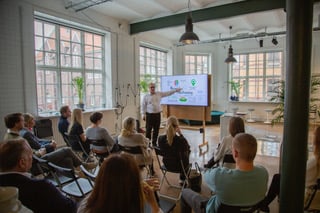
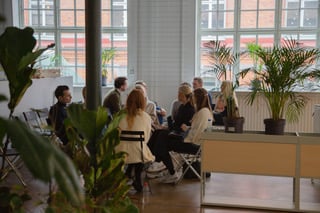
Read more: Developing a brand identity for Wellspect
Why should you run a brand workshop?
When you’re building a brand, it’s important not only to look at the external view of what your customers or the general public think about your brand and the space you’re in, but also to gather an internal viewpoint from your team.
An internal workshop is important for several reasons:
- Perspective. First, it gives you a contrast between the external view of your brand and the internal view, and that's a really interesting thing to capture as well as comprehend.
- Engagement. Second, pulling in people from various parts of the company to join a workshop helps build engagement with the process. It lets people on the team know that work on the brand is happening, and some changes may be coming.
- Champions. Third, people who are asked to participate in the branding workshops become your brand disciples. They now have a stake in the brand’s successful rollout and adoption as they contributed to the process and gave their input.
- Brand history. Finally, branding workshops help create the story of your brand history. Workshops help the agency team (and internal team) learn more about how the brand started, where it’s coming from, what the heritage is on the inside, and what it has stood for now and in the past.
Getting this internal buy-in is quite important because without it, gaining acceptance for changes in the brand can be a difficult, uphill battle. Involving people from across the organization makes this easier. Not everybody is going to be satisfied that you did things exactly the way they wanted, but you did listen, you did take input, and they were involved in the process, which makes a difference.
Tips for running effective branding workshops
I’ve held hundreds (yes, hundreds!) of brand strategy workshops over the years, and I have some practical advice and ideas about what works (and what doesn’t).
There is more to it than just gathering people in a room and asking them to pick their favorite color. It’s not about showing people your company presentation either. You want their input, ideas and insights. You want them to feel engaged, involved and heard. Here are some tips on how to run an engaging brand strategy workshop.
Tip: Include the difficult people
One bit of advice I always give to clients when we’re devising workshops is don't leave out the people who are difficult, or those with whom you have a bit of a problem.
Why? Well, one reason that they may be difficult or contrary in the first place is they may feel like they're not listened to. Quite often, these people have been with the company a long time, and they have a history with the brand. They know it and love it, and they kind of feel sidelined as the brand develops. So, it's important that you listen to them. The main thing is they want to be heard.
And perhaps more critically, you will get really great insights. By engaging those difficult people in the sessions, you get to hear their viewpoints. It's far better to have them in the session and raise any concerns there, in a format where it can be discussed and debated in the best possible way, than to have them in the background working against it. The workshop is the place to let everyone be heard. You don’t have to do what they say, but they will know you heard them, which makes a difference.
Tip: Include various disciplines
When a company is just starting out, creating a brand from the ground up, it’s important to get a spread of disciplines across the company involved to provide input and insight. You want the C-suite involved as well as the sales team, customer support, and technical (or scientific) teams – not just marketing.
In long-established companies, or those going through a rebrand, or merger, it’s important to hear from people from different areas of the company, and those with different lengths of tenure, as well.
Tip: Get past wishful thinking to the truth
Your goal in running a workshop is to find the truth. It’s common in internal workshops for people to say things like “we’re innovative,” or “we have the highest quality standards,” but quite often that's more of a wish than the truth. You have to cut through that to find out what the brand is all about, what it stands for, what it's going to represent. Encourage people to dig deeper.
Tip: Factor in the culture
Another important consideration is to understand the culture of the company, or the culture of the country where the workshop is held. In some places (such as Japan), you may have trouble getting subordinates to speak freely and honestly (or at all) if the boss is in the room. In these types of companies, you can schedule sessions with the C-suite or managers separately from the other groups.
Tip: Don’t fear friction
A bit of friction in a workshop is a good thing. There are going to be people in the company who have different opinions. And you want to hear them. This is the place for them to share it. It may come out that the company is performing worse than the managers think they are, or better than they think are. There’s something about workshops where you hear people say things or debate an issue, and you can hear the truth in what they're saying. That gives you a clue as to what you've got to do with the branding.
Tip: Listen for undercurrents
Sometimes isn’t not what people say but what they don’t say. Maybe there is a lack of enthusiasm or agreement with the company’s past messaging. Or maybe you’ll learn that customers don’t buy your products for the reasons you think they do. You might think customers are buying from you because they perceive high quality, but maybe they just think owning your product is a status symbol. (This was the case in a focus group I once held that involved customers of a scientific brand. After complaining about the brand’s price and poor customer service, one scientist admitted to buying the product because it showed others at the University that he had a large budget and could afford expensive equipment).
Tip: Play back what you heard
An important step after each part of the workshop is playing back what you heard. Give people a chance to disagree. Note their comments and move on to the next section. Draw some conclusions to make sure you heard them correctly. You could say, “So half the group think ‘X’ is a good idea, but half thing ‘Y’ is better, is that accurate?”
Tip: Keep it fun and entertaining
Workshops are a good forum for taking people through an exercise and doing it in a very entertaining as well as informative way. You want to make it fun and be sure people get something out of it. Keep your sessions short and change the focus frequently to break up the pace. You might start with a short educational presentation (10-15 minutes), then run a breakout session on identity or positioning or value propositions, then do playback (where participants of the break-out sessions share their conclusions), then show a short film, then offer a bit more education, then another breakout session.
Tip: Don’t go too long
For a half day workshop, plan about 2-4 hours and max 6-7 hours for a full day (with a lunch break in between). Online sessions should be shorter: no more than 2 hours at a time. Give people time to prepare their answers, discuss, and share back with the larger group. Allow time for discussion and include plenty of breaks in between sessions.
Tip: Choose an interesting venue
For in-person sessions, if possible, hold the workshop off site. A venue other than the normal office signals to people that this is something different than the normal day-to-day. It helps them think outside the box and be more creative. For online sessions, try starting with a fun exercise, maybe a game or even dance moves to set the stage that this isn’t a typical work meeting.
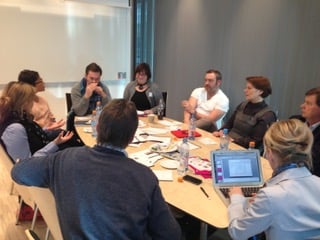
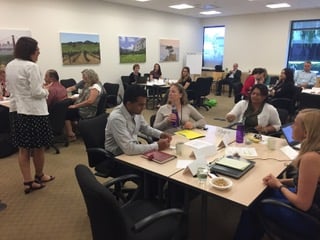
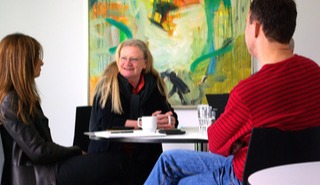
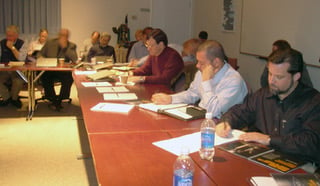
Read more: Rolling out a new brand identity with internal workshops
Workshops get people engaged
Workshops help ensure the brand represents what people inside the organization really think and helps them feel invested in how it was created. That makes a big difference in how they accept the new brand, adopt it and continue to spread the brand values internally and externally.
This can be especially important for rebranding efforts. Rebrands can be hard for people to accept – especially if it’s an old brand and people have a lot of emotion attached to it. Whether changing a name, a logo, colors or an entire identity, getting input from your internal team by holding a branding workshop can smooth the process and help you get it right.
Essential elements of an effective branding workshop
- Choose an interesting venue to set the stage for creative input.
- Have the right people in the session (a cross segment of the company or key decision makers).
- Plan the right length of sessions with adequate pacing: max 6 hours in one day with plenty of breaks and a change of format throughout.
- Include break-out sessions. Include 2-3 people or up to 8 in each breakout group.
- Include time for group debate and discussion. Have breakout groups report back to the larger group and get feedback on the ideas presented.
- Draw conclusions at the end of each session and ask if everyone agrees. If not, make a note of it and work out a way to solve it later.
- Include films or a presentation with examples to bring relevance.
- Provide preprinted cards or worksheets to spark creativity and generate ideas.
Want to schedule a branding workshop? Contact us.


